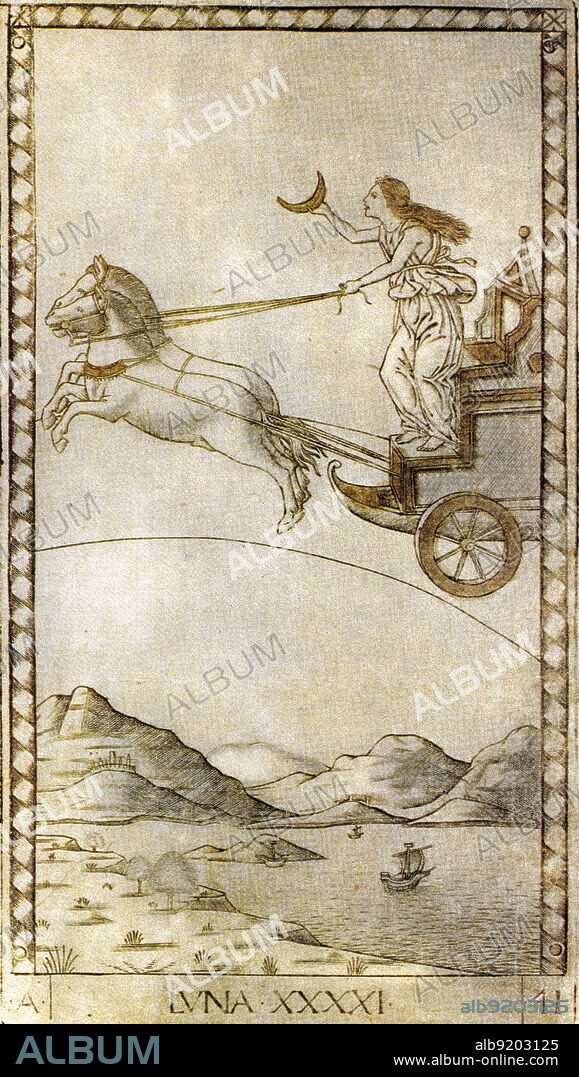alb9203125
Luna, Roman Moon Goddess, Tarot Card

|
Añadir a otro lightbox |
|
Añadir a otro lightbox |



¿Ya tienes cuenta? Iniciar sesión
¿No tienes cuenta? Regístrate
Compra esta imagen

Título:
Luna, Roman Moon Goddess, Tarot Card
Descripción:
Traducción automática: Imagen de la carta del tarot de Luna (la luna) de la baraja Mantegna. Las imágenes muestran a la diosa de la luna conduciendo su carro por los cielos, sosteniendo la luna creciente en su mano. En la antigua religión y mito romanos, Luna es la encarnación divina de la Luna (latín luna; cf. inglés "lunar"). A menudo se la presenta como el complemento femenino del Sol, concebido como un dios. Luna también se representa a veces como un aspecto de la triple diosa romana (diva triformis), junto con Proserpina y Hécate. Luna no siempre es una diosa distinta, sino a veces más bien un epíteto que especializa a una diosa, ya que tanto Diana como Juno se identifican como diosas de la luna. En el arte romano, los atributos de Luna son la luna creciente más el carro de dos yugos (biga). La contraparte griega de Luna era Selene. En el arte y la literatura romana, los mitos de Selene se adaptan bajo el nombre de Luna.
Tarot card image of Luna (the moon) from the Mantegna deck. The images shows the moon goddess driving her chariot across the skies, holding the crescent of the moon in her hand. In ancient Roman religion and myth, Luna is the divine embodiment of the Moon (Latin luna; cf. English "lunar"). She is often presented as the female complement of the Sun (Sol) conceived of as a god. Luna is also sometimes represented as an aspect of the Roman triple goddess (diva triformis ), along with Proserpina and Hecate. Luna is not always a distinct goddess, but sometimes rather an epithet that specializes a goddess, since both Diana and Juno are identified as moon goddesses. In Roman art, Luna's attributes are the crescent moon plus the two-yoke chariot (biga ). Luna's Greek counterpart was Selene. In Roman art and literature, myths of Selene are adapted under the name of Luna.
Personas:
Crédito:
Album / New York Public Library / Science Source
Autorizaciones:
Modelo: No - Propiedad: No
¿Preguntas relacionadas con los derechos?
¿Preguntas relacionadas con los derechos?
Tamaño imagen:
No disponible
Tamaño impresión:
No disponible
 Pinterest
Pinterest Twitter
Twitter Facebook
Facebook Copiar enlace
Copiar enlace Email
Email
